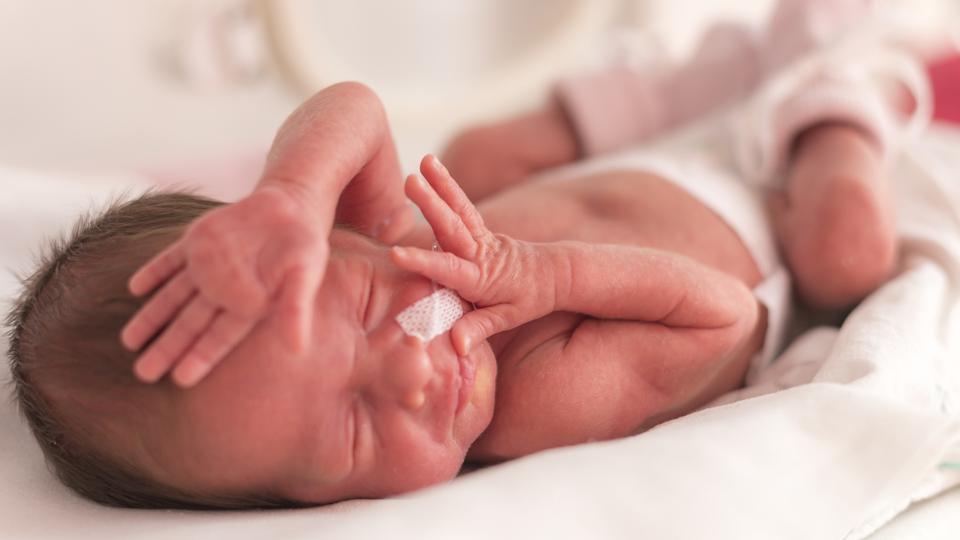LOW birth weight (LBW) is a risk factor for infant mortality, morbidity, growth retardation, poor cognitive development and chronic diseases. Maternal exposure to diseases such as malaria, HIV and syphilis has been shown to have a significant impact on birth weight.
In Tanzania the risk of low birth weight is presumably higher in women who conceive during high malaria transmission seasons. Sometime a baby may be born before the mandatory 37 weeks gestation. Such an unfortunate baby needs specialized care.
So, a baby born rather too early has less time in the mother’s uterus to grow and gain weight. In fact, much of a fetus’s weight is gained during the latter part of the mother’s pregnancy.
Another cause of low birth weight is intrauterine growth restriction. This occurs when a baby does not grow well in the utero because of problems with the placenta. The mother’s health or birth defects are other restrictions. Babies with growth restriction may be born early. Premature babies may be very small and immature.
However, some full-term babies with growth restriction may be physically mature but weak. Any baby born prematurely is more likely to be small. Nevertheless, there are other factors that can also contribute to the risk of low birth weight.
Teen mothers (especially those younger than 15 years) have a much higher risk of having a baby with low birth weight. Multiple birth babies are at increased risk of low birth weight because they often are premature.
Babies of mothers who are exposed to illicit drugs, alcohol and cigarettes are more likely to have low birth weight. Mothers of lower socio-economic status are also more likely to have poorer pregnancy nutrition, inadequate prenatal care and pregnancy complications.
All these factors can contribute to low birth weight. Nearly all low birth weight babies need specialized care in the Neonatal Intensive Care Unit until they gain weight and are well enough to go home.
Prevention of preterm births is one of the best ways to prevent babies born with low birth weight. Prenatal care is a key factor in preventing preterm births and low birth weight babies.
At prenatal visits, the health of both mother and fetus is checked. Women in Tanzania and elsewhere often complain that childbearing is becoming increasingly difficult and dangerous — even with high-tech medical facilities and skilled health workers around. This being the case, some women dislike this noble duty.
I must point out here, however, that most pregnancies are supposed to be safe and devoid of complications. This means most complications can be avoided even during childbirth.
Let us look at the key aspects of safe motherhood. Pregnancies must be safe if healthy, bouncing babies must be born. A chance for the mother is a chance for her baby.
Childbirth is challenging and complications can occur, but women’s bodies are designed to give birth. The shape of the pelvis, hormones, muscles and other body parts work together to help a pregnant woman bring her baby into the world. The hormone oxytocin control contractions during labour, as well ejection of the placenta after the baby is born.
The baby normally moves further down the pelvis as the head engages, or sits in place over the cervix, ready for the birth. Some women feel they have more room to breathe after the baby has moved down. This is called ‘lightening’.
Some women find the sac of amniotic fluid containing the baby breaks before labour, contractions start and the fluid runs (or gushes) out of the birth canal. This is referred to as rupture of the membranes, or ‘waters breaking’.
A pregnant woman should let the maternity team know when her waters have broken and take notice of the colour of the fluid.
It is usually light yellow. If it is green or red, she should tell the maternity team since this could mean the baby is having problems. If her waters have broken but she has not started having regular contractions within 24 hours, she may need her labour to be induced because there is a risk of infection.
Movies often show women suddenly being struck by painful contractions and rushing to hospital. In real life, many women are not sure if they have actually started their labour.
A pregnant woman may feel restless; have back pain or period-like pain, or stomach disturbances such as diarrhoea. Labour officially begins with contractions, which start working to open up the cervix. Sometimes, complications can occur before or during childbirth.
This means things do not go as expected. Sometimes, labour needs to be induced or started. There are a few ways to induce labour, including the mother being offered synthetic prostaglandin. This is inserted into the woman’s private part to soften the cervix and start contractions.
If contractions slow down or stop during labour, the mother may be offered synthetic oxytocin from a drip to increase the contractions. In both these cases contractions can come on strongly and more pain relief may be needed.
The maternity team should explain the benefits and risks of this with the pregnant woman. She should agree to it first. The baby could be in a posterior or breech position, not ideally placed above the cervix before the birth.
The maternity team may need to use forceps or a vacuum to help turn the baby or help the baby travel out of the woman’s private part. Sometimes a caesarean is needed. In rare cases, a mother may experience cephalopelvic disproportion (CPD).
This is when the baby’s head is too big to fit through the pelvis. A diagnosis of CPD is usually made when labour hasn’t progressed and synthetic oxytocin has not helped. A caesarean is usually the next step. If a pregnant woman smokes, her child is likely to be born underweight. The infant is also more likely to have coughs, colds, croup, pneumonia, or other respiratory problems. The primary cause of low weight births is premature birth. Often, still births or underweight infants are a result of mistakes.
Most pregnancies are normally safe and problem free. Perhaps that is why you see human beings virtually everywhere. However, it would be remiss on my part not to point out here that with any pregnancy there is a possibility that something may go wrong. Pregnancy complications cannot be predicted. The first delivery is the most dangerous. This explains why most new mothers are referred to reputable hospitals.
So, since dangerous problems can arise without warning during pregnancy or childbirth all families need to know the location of the nearest hospital or clinic. The major ominous signs include a pregnant woman’s failure to gain weight. At least six kilos should be gained during pregnancy.Anaemia; paleness inside the eyelids or unexplained fatigue are other signs of trouble.
A pregnant woman is not necessarily a weak person. Other ominous signs include pronounced swelling of legs, arms or face; inability on the part of the foetus to stir; bleeding during pregnancy or profuse or persistent bleeding after delivery.
There are also instances of severe headaches or stomach-aches and severe or persistent vomiting. The signs also include high fever; a water break before due time for delivery; convulsions; severe pain and prolonged labour which can lead to obstetric fistula.
It should be known expressly that such complications can even lead to death for the infant or the mother or both. Exhaustion, nausea, sore breasts and other symptoms are very common during the first trimester of pregnancy.
Fatigue is by far the most common complaint during the first trimester. A pregnant woman should take naps, go to bed early and leave the housecleaning to other people.
She should continue to exercise — though she may need to cut back on the intensity of her workouts. Frequent urination is another common complaint of the first trimester. It partly has to do with anatomy. As the uterus grows during early pregnancy, it puts more pressure on the urinary bladder, making the pregnant woman to feel like peeing more often.
Also, the amount of blood in her body increases dramatically in pregnancy, which means her kidneys process more fluid that ultimately winds up in her bladder.
But the situation improves as time rolls on. Tender, swollen breasts or sore nipples are typical in early pregnancy, as surging hormones prompt them to begin preparing to make milk. The breasts will keep growing throughout the nine months, but the soreness should subside by week 12.







